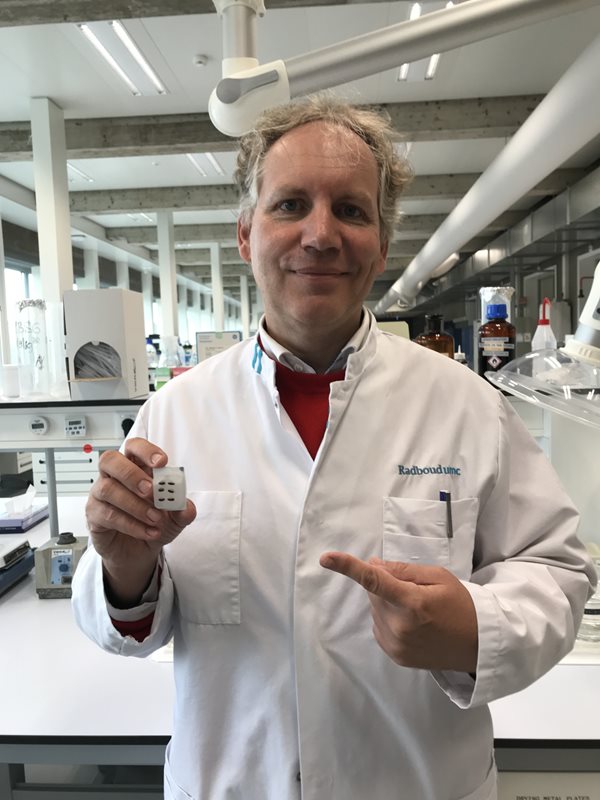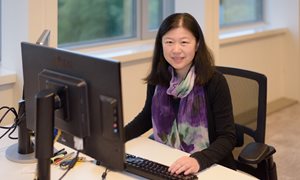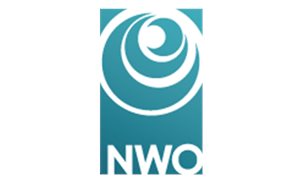10 October 2019
When you were a kid what did you want to be when you grew up? Can you tell us something about your child years.
As a boy, I was playing a lot of street soccer and hockey and I was reading a lot of books. When I was young, I wished to become archaeologist and would like to go to Peru to find the hidden city Viracocha where the Inca’s supposedly had hidden their treasures when the Spanish came… However, the chance of getting a paid job in this field seemed very difficult, therefore I changed my mind. At holidays in e.g. Italy, however, I still enjoy visiting beautiful excavation sites and old treasures. Meanwhile, I decided to discover novel treasures within biology and to become molecular scientist.
However, with the current flex workplaces, I am now adapting to working in a pdf world with less paper... so the paper piles are shrinking slowly…
What type of person are you, quick insights:
a) Mac or PC? : MAC
b) Theater or cinema? : Cinema
c) Dine out or dine in? : Dine out
d) Ferrari or Fiat? : I wish to change my Kungfu Panda with a Ferrari
e) Shopaholic or chocoholic? : Chocoholic
f) Culture or Nature : Both


When you were a kid what did you want to be when you grew up? Can you tell us something about your child years.
As a boy, I was playing a lot of street soccer and hockey and I was reading a lot of books. When I was young, I wished to become archaeologist and would like to go to Peru to find the hidden city Viracocha where the Inca’s supposedly had hidden their treasures when the Spanish came… However, the chance of getting a paid job in this field seemed very difficult, therefore I changed my mind. At holidays in e.g. Italy, however, I still enjoy visiting beautiful excavation sites and old treasures. Meanwhile, I decided to discover novel treasures within biology and to become molecular scientist.
What was your previous academic training, where did you study and why that study?
I studied “Molecular Sciences” in Wageningen University, a mix between biology, chemistry and physics. When I did my internships, I moved more towards the direction of biology and everything came to life. I got completely hooked to research and became attracted to the more medical topics. I moved to New York (Rockefeller University and New York Medical College) and returned to finish my PhD at Radboudumc (tumor immunology/hematology) and did my postdoc at pharmacology and toxicology. Now, I work at the Dentistry department and still like to collaborate with other labs.The RIMLS motto is: ‘Today’s molecules for tomorrow’s medicine’. What does this mean for you?
This motto fits very well with our research. We have been investigating for instance the use of the endogenous molecule bilirubin for use as medicine for inflammatory conditions. This “old” molecule was always seen as toxic waste product (when in large quantities, it can cause kernicterus in newborn babies). However, following mild elevation we demonstrated that bilirubin acts as a potent antioxidant and anti-inflammatory mediator not only in vitro and in animals but also in humans. We are currently investigating the role of inflammatory networks and protective pathways on etiology and therapeutic strategies of congenital abnormalities as cleft lip and palate and on scar formation/fibrosis.Who is your great example as scientists? And please give a motivation why.
There are many inspirational scientists… I chose two of them who were not afraid to think outside the scientific mainstream : 1. Leonardo Da Vinci (almost smartest Italian, engineer and artist) who thought in the 15th century about flying, biking and submarines… 2. Polly Matzinger who works as shepherd and developed from there the ‘danger theory’ that stirred up the immunological world.Which research discovery that you have made has made you most proud?
We demonstrated that heme induces inflammation via adhesion molecule induction, whereas heme oxygenase reduces inflammation. This mechanism plays a role in a wide variety of inflammatory diseases and processes, including sickle cell disease, pathological pregnancies, wound repair and fibrosis. We are currently developing a novel model explaining how free heme or heme in complex discriminates between immunity and tissue survival by acting as either danger signal or tissue survival factor.Given unlimited finance what experiment would you perform?
We would be able to faster translate promising in vitro and in vivo basic science findings to the clinical setting.What does your working area (desk, office) look like and what does it say about you (or your research)?
Like a bomb exploded… I guess my research is always exciting and explosive..However, with the current flex workplaces, I am now adapting to working in a pdf world with less paper... so the paper piles are shrinking slowly…
Nominate a colleague to be in the spotlight and what would you like to ask him or her?
Ben Joosten; how is your storm chasing going?What type of person are you, quick insights:
a) Mac or PC? : MAC
b) Theater or cinema? : Cinema
c) Dine out or dine in? : Dine out
d) Ferrari or Fiat? : I wish to change my Kungfu Panda with a Ferrari
e) Shopaholic or chocoholic? : Chocoholic
f) Culture or Nature : Both

Related news items

A tunable and injectable local drug delivery system for personalized periodontal application
11 May 2020 In Journal of Controlled Release, Fang Yang and colleagues, have designed and formulated a local delivery system by loading the PLGA-drug microspheres into PIC hydrogel. This system exhibited appropriate injectability, long-term structural stability, and no obvious in vivo inflammatory response. go to page
Three Vici grants for Radboudumc researchers
20 February 2020 Christian Beckmann, Sander Leeuwenburgh and Annette Schenck each receive a 1.5 million euro Vici research grant from NWO. go to page
A personal touch of Sander Leeuwenburgh
21 November 2019 In order to promote interaction amongst colleagues within RIMLS, we have a ‘personal touch’ series setting employees in the spotlight. A light-hearted manner to learn about the colleagues you know and those you don’t. This week: Sander Leeuwenburgh. go to page
NWO grant to develop new biomaterials for improved regeneration of bone defects
20 August 2019 Sander Leeuwenburgh, theme Reconstructive and regenerative medicine, and Roland Brock, theme Nanomedicine, were recently awarded with a grant of 581 k€ by NWO, domain Applied & Engineering Sciences, to develop new biomaterials for improved regeneration of bone defects. go to page
H2020 Grant for Frank Walboomers and Ronald Bartels
23 May 2019 Frank Walboomers and Ronald Bartels, theme Reconstructive and regenerative medicine, have received a € 500,000 grant for research into graphene biomaterials from the Europan Union Horizon 2020 FET Open programme. go to page
